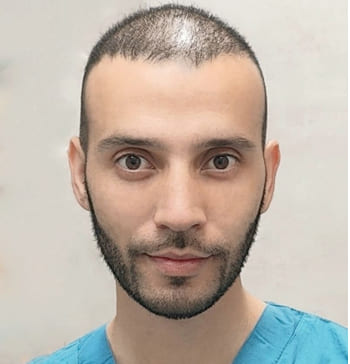

ТРАМАДОЛ/ПАРАЦЕТАМОЛ ТЕВА 75 мг/650 мг ТАБЛЕТКИ, ПОКРЫТЫЕ ПЛЁНОЧНОЙ ОБОЛОЧКОЙ

Спросите врача о рецепте на ТРАМАДОЛ/ПАРАЦЕТАМОЛ ТЕВА 75 мг/650 мг ТАБЛЕТКИ, ПОКРЫТЫЕ ПЛЁНОЧНОЙ ОБОЛОЧКОЙ

Инструкция по применению ТРАМАДОЛ/ПАРАЦЕТАМОЛ ТЕВА 75 мг/650 мг ТАБЛЕТКИ, ПОКРЫТЫЕ ПЛЁНОЧНОЙ ОБОЛОЧКОЙ
Введение
Инструкция: информация для пациента
Трамадол/Парацетамол Тева75 мг/650 мг таблетки, покрытые пленочной оболочкой
Гидрохлорид трамадола/парацетамола
Прочитайте внимательно всю инструкцию перед началом приема этого лекарства, поскольку она содержит важную информацию для вас.
- Сохраните эту инструкцию, поскольку вам может потребоваться прочитать ее снова.
- Если у вас есть какие-либо вопросы, проконсультируйтесь с вашим врачом или фармацевтом.
- Это лекарство было назначено только вам, и не передавайте его другим людям, даже если у них такие же симптомы, как у вас, поскольку оно может нанести им вред.
- Если вы испытываете побочные эффекты, проконсультируйтесь с вашим врачом или фармацевтом, даже если это побочные эффекты, которые не перечислены в этой инструкции. См. раздел 4.
Содержание инструкции
- Что такое Трамадол/Парацетамол Тева и для чего он используется
- Что вам нужно знать перед началом приема Трамадола/Парацетамола Тева
- Как принимать Трамадол/Парацетамол Тева
- Возможные побочные эффекты
- Хранение Трамадола/Парацетамола Тева
- Содержание упаковки и дополнительная информация
1. Что такое Трамадол/Парацетамол Тева и для чего он используется
Трамадол/парацетамол - это комбинация двух обезболивающих средств: трамадола и парацетамола, которые вместе помогают облегчить боль.
Трамадол/парацетамол показан для симптоматического лечения боли умеренной или сильной интенсивности, когда ваш врач считает, что комбинация трамадола и парацетамола необходима.
Трамадол/парацетамол должен использоваться только взрослыми и подростками старше 12 лет.
2. Что вам нужно знать перед началом приема Трамадола/Парацетамола Тева
Не принимайтеТрамадол/Парацетамол Тева:
- если вы аллергичны к трамадолу, парацетамолу или любому другому компоненту этого лекарства (перечисленному в разделе 6).
- если вы принимали какие-либо лекарства для лечения бессонницы, сильные обезболивающие средства (опиоиды) или психотропные средства (лекарства, которые могут изменить ваше настроение и эмоции) в случае острой алкогольной интоксикации;
- если вы принимаете ингибиторы МАО (определенные лекарства, используемые для лечения депрессии или болезни Паркинсона), или если вы принимали их в течение 14 дней перед началом лечения Трамадолом/Парацетамолом Тева.
- если у вас есть тяжелое заболевание печени.
- если у вас есть эпилепсия, которая не достаточно хорошо контролируется вашим текущим лечением.
Предостережения и меры предосторожности
Проконсультируйтесь с вашим врачом или фармацевтом перед началом приема Трамадола/Парацетамола Тева, если:
- вы принимаете другие лекарства, содержащие трамадол или парацетамол;
- у вас есть проблемы с печенью или заболевание печени, или если вы заметили, что ваши глаза или кожа приобрели желтый оттенок. Это может быть признаком желтухи или проблем с желчными протоками;
- у вас есть проблемы с почками;
- у вас есть тяжелые проблемы с дыханием, например, астма или тяжелые заболевания легких
- вы страдаете эпилепсией или имели приступы или судороги.
- вы недавно перенесли черепно-мозговую травму, шок или сильные головные боли, сопровождаемые рвотой.
- у вас есть зависимость от любого другого лекарства, используемого для облегчения боли, например, морфина;
- вы принимаете другие лекарства для лечения боли, содержащие бупренорфин, налбуфин или пентазоцин;
- вы будете подвергаться анестезии. Сообщите вашему врачу или дантисту, что вы используете Трамадол/Парацетамол Тева.
- у вас есть депрессия и вы принимаете антидепрессанты, поскольку некоторые из них могут взаимодействовать с трамадолом (см. «Другие лекарства и Трамадол/Парацетамол Тева»).
- Если вы принимаете флуклоксациллин (антибиотик), из-за высокого риска нарушения состава крови и жидкостей (метаболического ацидоза с высокой анионной разницей), который должен быть немедленно лечен и который может возникнуть особенно в случае тяжелой почечной недостаточности, сепсиса (когда бактерии и их токсины циркулируют в крови, что приводит к повреждению органов), недоедания, хронического алкоголизма и если используются максимальные суточные дозы парацетамола в течение более длительного периода. Метаболический ацидоз с высокой анионной разницей - это тяжелое заболевание, которое требует немедленного лечения.
Во время лечения трамадолом/парацетамолом сообщите вашему врачу немедленно, если у вас есть тяжелые заболевания, такие как тяжелая почечная недостаточность или сепсис (когда бактерии и их токсины циркулируют в крови, что приводит к повреждению органов), или если у вас есть недоедание, хронический алкоголизм или если вы также принимаете флуклоксациллин (антибиотик). Было сообщено о тяжелом заболевании, называемом метаболическим ацидозом (нарушением состава крови и жидкостей), у пациентов в этих ситуациях, когда используется парацетамол в обычных дозах в течение длительного периода или когда парацетамол принимается вместе с флуклоксациллином. Симптомы метаболического ацидоза могут включать: сильную одышку с глубоким и быстрым дыханием, сонливость, чувство недомогания (тошноту) и рвоту.
Проконсультируйтесь с вашим врачом или фармацевтом перед началом приема Трамадола/Парацетамола Тева.
Если у вас возникли или ранее были какие-либо из этих проблем во время приема Трамадола/Парацетамола Тева, пожалуйста, сообщите вашему врачу. Он решит, должны ли вы продолжать принимать это лекарство.
Трамадол метаболизируется в печени ферментом. Некоторые люди имеют вариацию этого фермента, и это может повлиять на каждого человека по-разному. У некоторых людей может не быть достаточного обезболивания, в то время как другие люди более вероятно испытывают тяжелые побочные эффекты. Если вы заметите любой из следующих побочных эффектов, вы должны перестать принимать это лекарство и проконсультироваться с врачом немедленно: медленное или поверхностное дыхание, спутанность сознания, сонливость, сужение зрачков, общее недомогание или рвота, запор, отсутствие аппетита.
Существует небольшой риск того, что вы испытаете серотониновый синдром, который может возникнуть после приема трамадола в сочетании с определенными антидепрессантами или трамадолом в монотерапии. Проконсультируйтесь с врачом немедленно, если вы испытываете любой из симптомов, связанных с этим тяжелым синдромом (см. раздел 4 «Возможные побочные эффекты»).
Толерантность, зависимость и аддикция
Это лекарство содержит трамадол, который является опиоидным лекарством. Повторное использование опиоидов может сделать лекарство менее эффективным (вы привыкаете к нему, что известно как толерантность). Повторное использование трамадола/парацетамола также может привести к зависимости, злоупотреблению и аддикции, что может привести к потенциально смертельной передозировке. Риск этих побочных эффектов может увеличиться с увеличением дозы и продолжительности использования.
Зависимость или аддикция могут заставить вас чувствовать, что вы больше не контролируете количество лекарства, которое вам нужно принимать, или частоту, с которой вы должны его принимать.
Риск того, что вы станете зависимым или аддиктивным, варьируется от человека к человеку. Вы можете иметь более высокий риск стать зависимым или аддиктивным к трамадолу/парацетамолу, если:
- Вы или кто-то из вашей семьи злоупотреблял или был зависим от алкоголя, лекарств по рецепту или незаконных веществ («аддикция»).
- Вы курите.
- У вас когда-либо были проблемы с настроением (депрессия, тревога или расстройство личности) или вы были лечены психиатром за другие психические заболевания.
Если вы заметите любой из следующих признаков во время приема трамадола/парацетамола, это может быть признаком того, что вы стали зависимым или аддиктивным:
- Вам нужно принимать лекарство в течение более длительного периода, чем рекомендовал ваш врач
- Вам нужно принимать больше рекомендуемой дозы
- Вы используете лекарство по причинам, отличным от назначенных, например, «чтобы успокоиться» или «чтобы заснуть»
- Вы неоднократно пытались и безуспешно пытались бросить или контролировать использование лекарства
- Когда вы перестаете принимать лекарство, вы чувствуете себя плохо, и чувствуете себя лучше, когда снова начинаете принимать его («абстиненция»)
Если вы заметите любой из этих признаков, проконсультируйтесь с вашим врачом, чтобы он мог порекомендовать вам лучший курс лечения, включая то, когда следует перестать принимать его и как это можно сделать безопасно (см. раздел 3, «Если вы перестаете принимать трамадол/парацетамол»).
Расстройства дыхания во сне
Трамадол/Парацетамол Тева может вызывать расстройства дыхания во сне, такие как центральная апноэ во сне (поверхностное дыхание или паузы в дыхании во время сна) и гипоксемия во сне (низкий уровень кислорода в крови).Среди симптомов могут быть паузы в дыхании во время сна, ночные пробуждения из-за нехватки воздуха, трудности с поддержанием сна или чрезмерная сонливость днем. Если вы или кто-то другой заметили эти симптомы, свяжитесь с вашим врачом. Возможно, ваш врач рассмотрит снижение дозы.
Риск развития центральной апноэ во сне зависит от дозы опиоидов. Ваш врач может рассмотреть снижение общей дозы опиоидов, если вы испытываете центральную апноэ во сне.
Сообщите вашему врачу, если вы испытываете любой из следующих симптомов во время приема трамадола/парацетамола:
Чрезмерная усталость, отсутствие аппетита, сильная боль в животе, тошнота, рвота или низкое кровяное давление. Они могут быть признаками недостаточности надпочечников (низкого уровня кортизола). Если у вас есть эти симптомы, свяжитесь с вашим врачом, который решит, нужно ли вам принимать гормональные добавки.
Дети и подростки
Не рекомендуется использовать это лекарство у детей младше 12 лет.
Использование у детей с проблемами дыхания:
Не рекомендуется использовать трамадол у детей с проблемами дыхания, поскольку симптомы токсичности трамадола могут ухудшиться у этих детей.
Другие лекарства и Трамадол/Парацетамол Тева
Сообщите вашему врачу или фармацевту, если вы принимаете, недавно принимали или можете принять любое другое лекарство, такое как:
- Габапентин или прегабалин для лечения эпилепсии или боли, вызванной проблемами с нервами (нейропатическая боль).
- Флуклоксациллин (антибиотик), из-за высокого риска нарушения состава крови и жидкостей (метаболического ацидоза), который должен быть немедленно лечен (см. раздел 2)
Важно: это лекарство содержит парацетамол и трамадол. Сообщите вашему врачу, если вы принимаете любое другое лекарство, содержащее парацетамол или трамадол, чтобы не превышать максимальную суточную дозу.
Вы не должны приниматьТрамадол/Парацетамол Тева вместе с ингибиторами моноаминоксидазы (ИМАО) (см. раздел «Не принимайте Трамадол/Парацетамол Тева»)
Противопоказано использование Трамадола/Парацетамола Тева, если вы проходите лечение:
- Карбамазепином (лекарством, обычно используемым для лечения эпилепсии или некоторых типов боли, таких как приступы сильной боли в лице, называемые тригеминальной невралгией). Может увеличиться вредное воздействие парацетамола на печень.
- Бупренорфином, налбуфином или пентазоцином (опиоидными обезболивающими). Может быть уменьшено обезболивающее действие.
Совместное использование Трамадола/Парацетамола Тева и седативных лекарств, таких как бензодиазепины или связанные с ними лекарства, увеличивает риск сонливости, дыхательных проблем (депрессии дыхания), комы и может быть смертельным. По этой причине совместное использование должно быть рассмотрено только в том случае, если не возможны другие варианты лечения.
Однако, если ваш врач назначает вам Трамадол/Парацетамол Тева вместе с седативными лекарствами, он должен ограничить дозу и продолжительность совместного лечения.
Сообщите вашему врачу о всех седативных лекарствах, которые вы принимаете, и следуйте точно рекомендации вашего врача по дозировке. Может быть полезно сообщить вашим друзьям и членам семьи о признаках и симптомах, указанных выше. Свяжитесь с вашим врачом, если вы испытываете любой из этих симптомов.
Риск побочных эффектов увеличивается:
- если вы принимаете лекарства, которые могут вызвать судороги, такие как определенные антидепрессанты или антипсихотические средства. Риск судорог увеличивается, если вы принимаете Трамадол/Парацетамол Тева одновременно с этими лекарствами. Ваш врач скажет вам, подходит ли Трамадол/Парацетамол Тева для вас.
- если вы принимаете лекарства для лечения депрессии, Трамадол/Парацетамол Тева может взаимодействовать с этими лекарствами и вы можете испытать серотониновый синдром (см. раздел 4 «Возможные побочные эффекты»).
- Триптаны (для лечения мигрени) или селективные ингибиторы обратного захвата серотонина, «СИОЗС» (для лечения депрессии). Если вы испытываете спутанность сознания, агитацию, жар, пот, некоординированные движения конечностей или глаз, неконтролируемые мышечные сокращения или диарею, вам следует позвонить вашему врачу.
- Седативные средства, снотворные, другие обезболивающие средства, такие как морфин и кодеин (также когда они используются для лечения кашля), баклофен (мышечный релаксант), некоторые лекарства для снижения артериального давления, антидепрессанты или лекарства для лечения аллергии. Вы можете чувствовать сонливость или головокружение. Если это происходит, проконсультируйтесь с вашим врачом.
Совместное использование трамадола/парацетамола и седативных лекарств, таких как бензодиазепины или связанные с ними лекарства, увеличивает риск сонливости, дыхательных проблем (депрессии дыхания), комы и может быть потенциально смертельным. По этой причине совместное использование должно быть рассмотрено только в том случае, если не возможны другие варианты лечения. Однако, если ваш врач назначает вам это лекарство вместе с седативными лекарствами, он должен ограничить дозу и продолжительность совместного лечения.
Сообщите вашему врачу о всех седативных лекарствах, которые вы принимаете, и следуйте точно рекомендации вашего врача по дозировке. Может быть полезно сообщить вашим друзьям и членам семьи о признаках и симптомах, указанных выше. Сообщите вашему врачу, если вы испытываете любой из этих симптомов.
- Антидепрессанты, анестетики, нейролептики (лекарства, которые влияют на настроение) или бупропион (лекарство, используемое как помощь для отказа от курения). Риск судорог может увеличиться. Ваш врач скажет вам, подходит ли Трамадол/Парацетамол Тева для вас.
- Варфарин или фенпрокумон (лекарство, используемое для предотвращения тромбов в крови). Эффективность этих лекарств может быть изменена, и существует риск кровотечения. Вы должны немедленно сообщить вашему врачу о любой длительной или неожиданной кровотечении.
Эффективность Трамадола/Парацетамола Тева может быть изменена, если вы также используете:
- Метоклопрамид, домперидон или ондансетрон (лекарства для лечения тошноты и рвоты),
- Холестирамин (лекарство, снижающее уровень холестерина в крови),
- Кетоконазол и эритромицин (лекарства, используемые для лечения инфекций).
Ваш врач знает, какие лекарства безопасны для использования вместе с Трамадолом/Парацетамолом Тева.
ПриемТрамадола/Парацетамола Тевас пищей, напитками и алкоголем
Трамадол/Парацетамол Тева может вызывать сонливость. Алкоголь может сделать вас еще более сонливым, поэтому не рекомендуется принимать алкоголь во время приема Трамадола/Парацетамола Тева.
Беременность и лактация
Если вы беременны или кормите грудью, считаете, что можете быть беременной или планируете стать беременной, проконсультируйтесь с вашим врачом или фармацевтом перед использованием этого лекарства.
Беременность
Поскольку Трамадол/Парацетамол Тева 75 мг/650 мг содержит трамадол, не рекомендуется использовать это лекарство во время беременности или лактации. Если вы становитесь беременной во время лечения трамадолом/парацетамолом, проконсультируйтесь с вашим врачом перед приемом следующей таблетки.
Лактация
Трамадол выделяется в грудное молоко. По этой причине не следует принимать Трамадол/Парацетамол Тева более одного раза во время лактации, или если вы принимаете Трамадол/Парацетамол Тева более одного раза, вам следует прекратить лактацию.
На основе опыта у людей не предполагается, что трамадол влияет на фертильность мужчин и женщин. Нет доступных данных о влиянии комбинации трамадола и парацетамола на фертильность.
Вождение и использование машин
Трамадол/Парацетамол Тева может вызывать сонливость, и это может повлиять на вашу способность управлять транспортными средствами или работать с тяжелой техникой.
Спросите вашего врача, можете ли вы управлять транспортными средствами или использовать машины во время лечения Трамадолом/Парацетамолом Тева 75 мг/650 мг. Важно наблюдать, как это лекарство влияет на вас, прежде чем управлять транспортными средствами или работать с машинами. Не управляйте транспортными средствами и не работайте с машинами, если вы чувствуете сонливость, головокружение, имеете размытое зрение или видите двойное, или испытываете трудности с концентрацией внимания. Будьте особенно осторожны в начале лечения, после увеличения дозы, после изменения формы выпуска и/или при совместном использовании с другими лекарствами.
Трамадол/Парацетамол Тева 75 мг/650 мг содержит натрий
Это лекарство содержит менее 1 ммоль натрия (23 мг) на таблетку; это означает, что оно практически «не содержит натрия».
3. Как принимать Трамадол/Парацетамол Тева
Следуйте точно инструкциям по применению этого препарата, указанным вашим врачом или фармацевтом. В случае сомнений проконсультируйтесь с вашим врачом или фармацевтом.
До начала лечения и на протяжении всего лечения ваш врач объяснит, чего можно ожидать от использования трамадола/парацетамола, когда и как долго его следует принимать, когда необходимо связаться с врачом и когда его следует прекратить (см. также раздел 2).
Доза должна быть調整ована в зависимости от интенсивности боли и индивидуальной чувствительности.
Трамадол/парацетамол следует принимать в течение минимально возможного времени.
Применение у детей
Не рекомендуется применение этого препарата у детей младше 12 лет.
Применение у взрослых
Если ваш врач не назначил иного, обычная начальная доза для взрослых и подростков старше 12 лет составляет один таблетку.
Если необходимо, можно увеличить дозу, как рекомендует ваш врач. Минимальный интервал между дозами должен составлять не менее 6 часов.
Не принимайте более 4 таблеток трамадола/парацетамола в день.
Не принимайте трамадол/парацетамол чаще, чем указано вашим врачом.
Пациенты пожилого возраста
У пациентов пожилого возраста (старше 75 лет) выведение трамадола может быть замедленным. Если это ваш случай, ваш врач может рекомендовать продлить интервалы между дозами.
Пациенты с нарушением функции печени или почек/пациенты на диализе
Если у вас есть тяжелое заболевание печени или почек, лечение трамадолом/парацетамолом не рекомендуется. Если у вас есть умеренные нарушения функции печени или почек, ваш врач может продлить интервалы между дозами.
Способ применения
Трамадол/парацетамол принимается перорально.
Таблетки следует проглатывать целиком с достаточным количеством жидкости. Не следует разламывать или жевать их.
Если вы считаете, что эффект трамадола/парацетамола слишком сильный (например, вы чувствуете сильную сонливость или имеете трудности с дыханием) или слишком слабый (например, у вас нет достаточного облегчения боли), сообщите об этом вашему врачу.
Если вы приняли большеТрамадола/Парацетамола Тева, чем следует
Если вы приняли больше трамадола/парацетамола, чем следует, даже если вы чувствуете себя хорошо, немедленно проконсультируйтесь с вашим врачом, поскольку существует риск серьезных повреждений печени, которые могут проявиться позже.
В случае передозировки или случайного приема обратитесь к Службе токсикологической информации, телефон 91 562 04 20.
Если вы пропустили приемТрамадола/Парацетамола Тева
Если вы пропустили прием трамадола/парацетамола, вероятно, боль снова появится. Не принимайте двойную дозу, чтобы компенсировать пропущенные дозы, просто продолжайте принимать таблетки как обычно.
Если вы прекратили лечениеТрамадолом/Парацетамолом Тева
Обычно не出现ят нежелательные эффекты после прекращения лечения трамадолом/парацетамолом. Однако в редких случаях пациенты, которые принимали трамадол/парацетамол в течение некоторого времени и внезапно прекратили лечение, могут чувствовать себя плохо (см. раздел 4 «Возможные нежелательные эффекты»). Не следует внезапно прекращать прием этого препарата, если только ваш врач не указал иного. Если вы хотите прекратить прием препарата, сначала проконсультируйтесь с вашим врачом, особенно если вы принимали его в течение длительного времени. Ваш врач сообщит вам, когда и как прекратить лечение, которое может быть осуществлено путем постепенного уменьшения дозы для снижения вероятности появления нежелательных эффектов (симптомов абстиненции).
Если у вас есть другие вопросы о применении этого препарата, обратитесь к вашему врачу или фармацевту.
4. Возможные нежелательные эффекты
Как и все препараты, этот препарат может вызывать нежелательные эффекты, хотя не все люди их испытывают.
Очень часто (могут возникать у более 1 из 10 человек)
- тошнота.
- головокружение, сонливость.
Часто (могут возникать у до 1 из 10 человек)
- рвота, проблемы с пищеварением (запор, метеоризм, диарея), боль в желудке, сухость во рту.
- зуд, усиление потоотделения.
- головная боль, беспокойство.
- спутанность сознания, нарушения сна, изменения настроения (тревога, нервозность, эйфория, чувство «подъема»).
Редко (могут возникать у до 1 из 100 человек)
- тахикардия, гипертония, нарушения сердечного ритма и частоты.
- наличие альбумина в моче, затруднение или боль при мочеиспускании.
- реакции кожи (например, высыпания, крапивница).
- повышение активности печеночных ферментов.
- чувство онемения, покалывания или жжения в конечностях, звон в ушах, мышечные спазмы.
- депрессия, кошмары, галлюцинации, потеря памяти.
- затруднение глотания, кровь в кале.
- озноб, приливы, боль в груди.
- затруднение дыхания.
Редко (могут возникать у до 1 из 1000 человек)
- судороги, нарушения координации, кратковременная потеря сознания (синкоп).
- зависимость от препарата.
- делирий.
- неясное зрение, сужение зрачков (миоз).
- нарушения речи.
- расширение зрачков (мидриаз).
Частота не известна (не может быть оценена на основе доступных данных)
- снижение уровня сахара в крови (гипогликемия).
- гипо.
- серотониновый синдром, который может проявляться изменениями психического состояния (например, беспокойство, галлюцинации, кома) и другими эффектами, такими как лихорадка, увеличение частоты сердечных сокращений, нестабильное артериальное давление, мышечные спазмы, жесткость мышц, нарушения координации и/или желудочно-кишечные симптомы (например, тошнота, рвота, диарея) (см. раздел 2 «Что нужно знать перед приемом Трамадола/Парацетамола Тева»).
- тяжелое заболевание, которое может привести к увеличению кислотности крови (метаболический ацидоз) у пациентов с тяжелым заболеванием, принимающих парацетамол (см. раздел 2).
Следующие нежелательные эффекты были зарегистрированы у людей, принимавших препараты, содержащие только трамадол или только парацетамол. Однако, если вы испытываете любой из этих симптомов во время приема Трамадола/Парацетамола Тева, сообщите об этом вашему врачу:
- Чувство головокружения при вставании после сидения или лежания, низкая частота сердечных сокращений, обморок, изменения аппетита, мышечная слабость, более медленное или слабое дыхание, изменения настроения, изменения активности, изменения восприятия, ухудшение астмы.
- Применение парацетамола в одиночку или вместе с антибиотиком флуклоксациллином может привести к аномалии крови и жидкостей (метаболический ацидоз с высоким анионным дефицитом) при увеличении кислотности плазмы крови.
- Применение Трамадола/Парацетамола Тева вместе с антикоагулянтами (например, фенпрокумоном, варфарином) может увеличить риск кровотечений. Сообщите вашему врачу немедленно о любой длительной или неожиданной кровотечении.
- В очень редких случаях были зарегистрированы тяжелые реакции кожи. В редких случаях кожные высыпания, указывающие на аллергические реакции, которые могут проявляться в виде внезапного отека лица и шеи, затруднения дыхания или падения артериального давления и головокружения. Если это происходит, прекратите лечение и немедленно проконсультируйтесь с вашим врачом. Не следует снова принимать этот препарат. В редких случаях применение препарата, подобного трамадолу, может привести к зависимости, что затрудняет его отказ.
В редких случаях люди, которые принимали трамадол в течение некоторого времени, могут чувствовать себя плохо, если внезапно прекратят лечение. Они могут чувствовать беспокойство, тревогу, нервозность или дрожь. Они могут быть гиперактивными, иметь трудности со сном и страдать от желудочно-кишечных расстройств. Очень немногие люди могут испытывать также приступы паники, галлюцинации, необычные ощущения, такие как зуд, онемение и покалывание, и звон в ушах (тиннитус). Если вы испытываете любой из этих симптомов после прекращения лечения Трамадолом/Парацетамолом Тева, пожалуйста, проконсультируйтесь с вашим врачом.
В исключительных случаях анализы крови могут выявить определенные аномалии, например, низкий уровень тромбоцитов, что может привести к кровотечениям из носа или десен.
Были зарегистрированы редкие случаи респираторной депрессии при применении трамадола.
Сообщение о нежелательных эффектах
Если вы испытываете любой нежелательный эффект, проконсультируйтесь с вашим врачом или фармацевтом, даже если это возможный нежелательный эффект, не указанный в этом листке-вкладыше. Вы также можете сообщить об этом напрямую через Систему фармаковигиланса Испании: https://www.notificaram.es. Сообщая о нежелательных эффектах, вы можете внести свой вклад в предоставление более полной информации о безопасности этого препарата.
5. Хранение Трамадола/Парацетамола Тева
Храните этот препарат в недоступном для детей месте.
Храните этот препарат в безопасном и защищенном месте, где другие люди не могут получить к нему доступ. Он может вызвать серьезные повреждения и быть смертельным для людей, которым он не был назначен.
Не требует специальных условий хранения.
Не используйте этот препарат после даты истечения срока годности, указанной на упаковке после «CAD» или «EXP». Дата истечения срока годности - последний день месяца, указанного.
Препараты не должны выбрасываться в канализацию или мусор. Поместите упаковку и препарат, который вам не нужен, в пункт сбора SIGRE в аптеке. В случае сомнений проконсультируйтесь с вашим фармацевтом, как правильно утилизировать упаковку и препарат, который вам не нужен. Таким образом, вы поможете защитить окружающую среду.
6. Содержание упаковки и дополнительная информация
СоставТрамадола/Парацетамола Тева
- Активные вещества - гидрохлорид трамадола и парацетамол.
Одна таблетка с пленочной оболочкой содержит 75 мг гидрохлорида трамадола и 650 мг парацетамола.
- Другие компоненты:
Ядро таблетки:
Преджелатинизированный крахмал (полученный из кукурузы), стеариновая кислота, повидон, кросповидон, микрокристаллическая целлюлоза, карбоксиметилцеллюлоза натрия (тип А) (полученная из картофеля), гидроксипропилцеллюлоза, стеарат магния растительного происхождения, очищенная вода.
Оболочка: OPADRY желтый 15B82958 (гипромеллоза, макрогол 400, диоксид титана (E171), оксид железа желтый (E172), полисорбат 80).
Внешний вид продукта и содержание упаковки
Трамадол/Парацетамол Тева таблетки с пленочной оболочкой, представленные в виде таблеток с пленочной оболочкой, продолговатой формы, двояковыпуклых и желтого цвета, упакованные в блистеры PVC-белый непрозрачный/Ал и PVC/PVDC-белый непрозрачный/Ал.
Трамадол/Парацетамол Тева представлен в упаковках по 20, 60 и 100 таблеток.
Владелец разрешения на маркетинг и ответственный за производство
Владелец разрешения на маркетинг
Teva Pharma, S.L.U.
Улица Анабель Сегура, 11, здание Альбатрос Б, 1-й этаж, Алькобендас
28108 Мадрид, Испания
Ответственный за производство
FARMALIDER, S.A
Улица Арагонесес, 2
28108 Алькобендас
Мадрид, Испания
Toll Manufacturing Services, S.L.
Улица Арагонесес, 2
28108 Алькобендас
Мадрид, Испания
Дата последней ревизии этого листка-вкладыша:февраль 2025
«Дetailed информация о этом препарате доступна на сайте Агентства по лекарственным средствам и медицинским изделиям Испании (AEMPS) http://www.aemps.es/»

Сколько стоит ТРАМАДОЛ/ПАРАЦЕТАМОЛ ТЕВА 75 мг/650 мг ТАБЛЕТКИ, ПОКРЫТЫЕ ПЛЁНОЧНОЙ ОБОЛОЧКОЙ в Испании в 2025 году?
Средняя цена на ТРАМАДОЛ/ПАРАЦЕТАМОЛ ТЕВА 75 мг/650 мг ТАБЛЕТКИ, ПОКРЫТЫЕ ПЛЁНОЧНОЙ ОБОЛОЧКОЙ в декабрь, 2025 года составляет около 5.92 евро. Финальная стоимость может зависеть от региона, конкретной аптеки и рецептурного статуса. Для точной информации лучше проверить онлайн или в ближайшей аптеке.
- Страна регистрации
- Средняя цена в аптеках5.92 EUR
- Активное вещество
- Требуется рецептДа
- Производитель
- Информация носит справочный характер и не является медицинской рекомендацией. Перед приемом любых препаратов проконсультируйтесь с врачом. Oladoctor не несет ответственности за медицинские решения, принятые на основе этого контента.
- Аналоги ТРАМАДОЛ/ПАРАЦЕТАМОЛ ТЕВА 75 мг/650 мг ТАБЛЕТКИ, ПОКРЫТЫЕ ПЛЁНОЧНОЙ ОБОЛОЧКОЙФорма выпуска: ТАБЛЕТКА, 325/37,5 мгАктивное вещество: tramadol and paracetamolПроизводитель: Ferrer Internacional S.A.Требуется рецептФорма выпуска: ТАБЛЕТКА, 650/75 мгАктивное вещество: tramadol and paracetamolПроизводитель: Ferrer Internacional S.A.Требуется рецептФорма выпуска: ШИПУЧАЯ ТАБЛЕТКА, 37,5 мг/325 мгАктивное вещество: tramadol and paracetamolПроизводитель: Aristo Pharma Iberia S.L.Требуется рецепт
Аналоги ТРАМАДОЛ/ПАРАЦЕТАМОЛ ТЕВА 75 мг/650 мг ТАБЛЕТКИ, ПОКРЫТЫЕ ПЛЁНОЧНОЙ ОБОЛОЧКОЙ в других странах
Лучшие аналоги с тем же действующим веществом и терапевтическим эффектом.
Аналог ТРАМАДОЛ/ПАРАЦЕТАМОЛ ТЕВА 75 мг/650 мг ТАБЛЕТКИ, ПОКРЫТЫЕ ПЛЁНОЧНОЙ ОБОЛОЧКОЙ в Польша
Врачи онлайн по ТРАМАДОЛ/ПАРАЦЕТАМОЛ ТЕВА 75 мг/650 мг ТАБЛЕТКИ, ПОКРЫТЫЕ ПЛЁНОЧНОЙ ОБОЛОЧКОЙ
Консультация по дозировке, побочным эффектам, взаимодействиям, противопоказаниям и продлению рецепта на ТРАМАДОЛ/ПАРАЦЕТАМОЛ ТЕВА 75 мг/650 мг ТАБЛЕТКИ, ПОКРЫТЫЕ ПЛЁНОЧНОЙ ОБОЛОЧКОЙ – по решению врача и с учетом местных правил.














